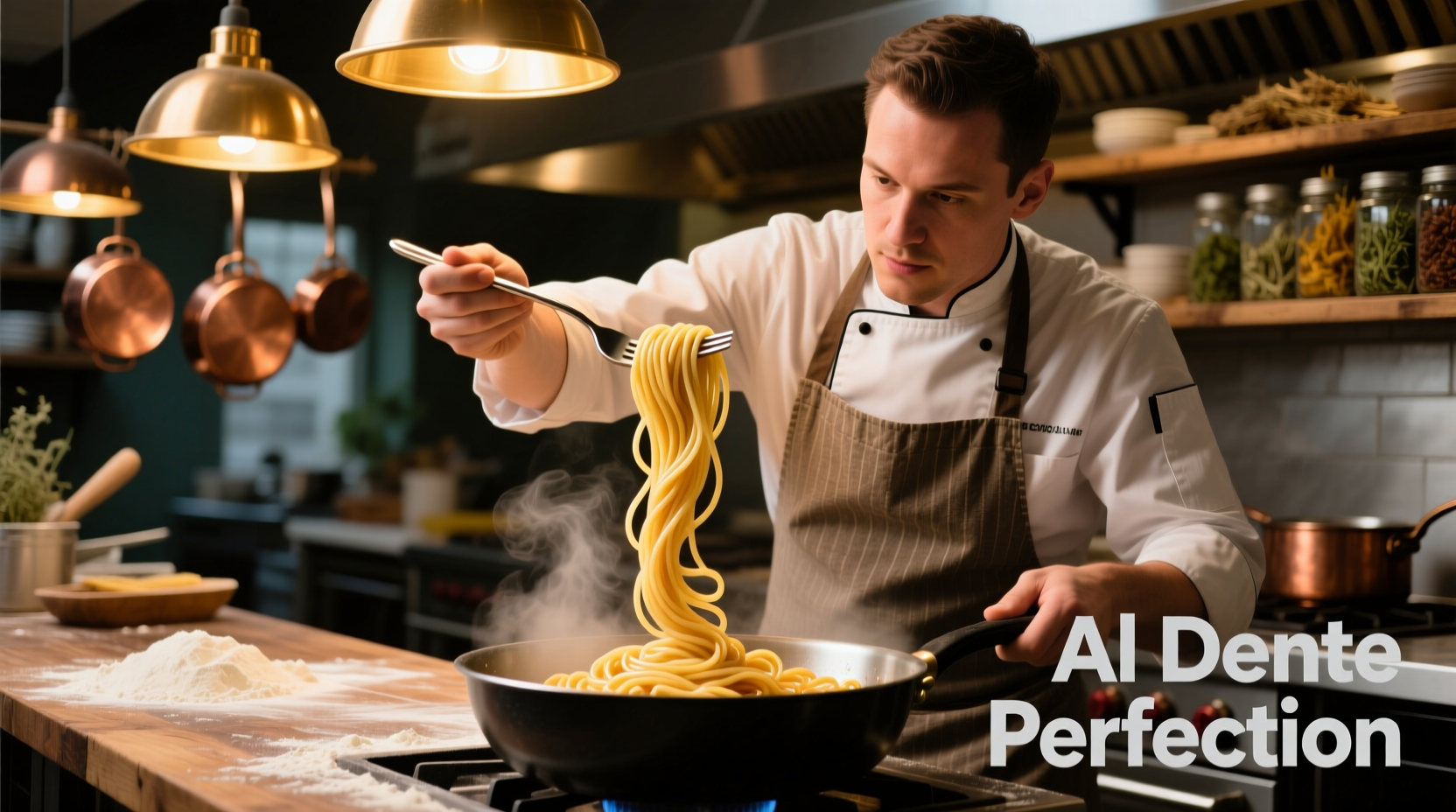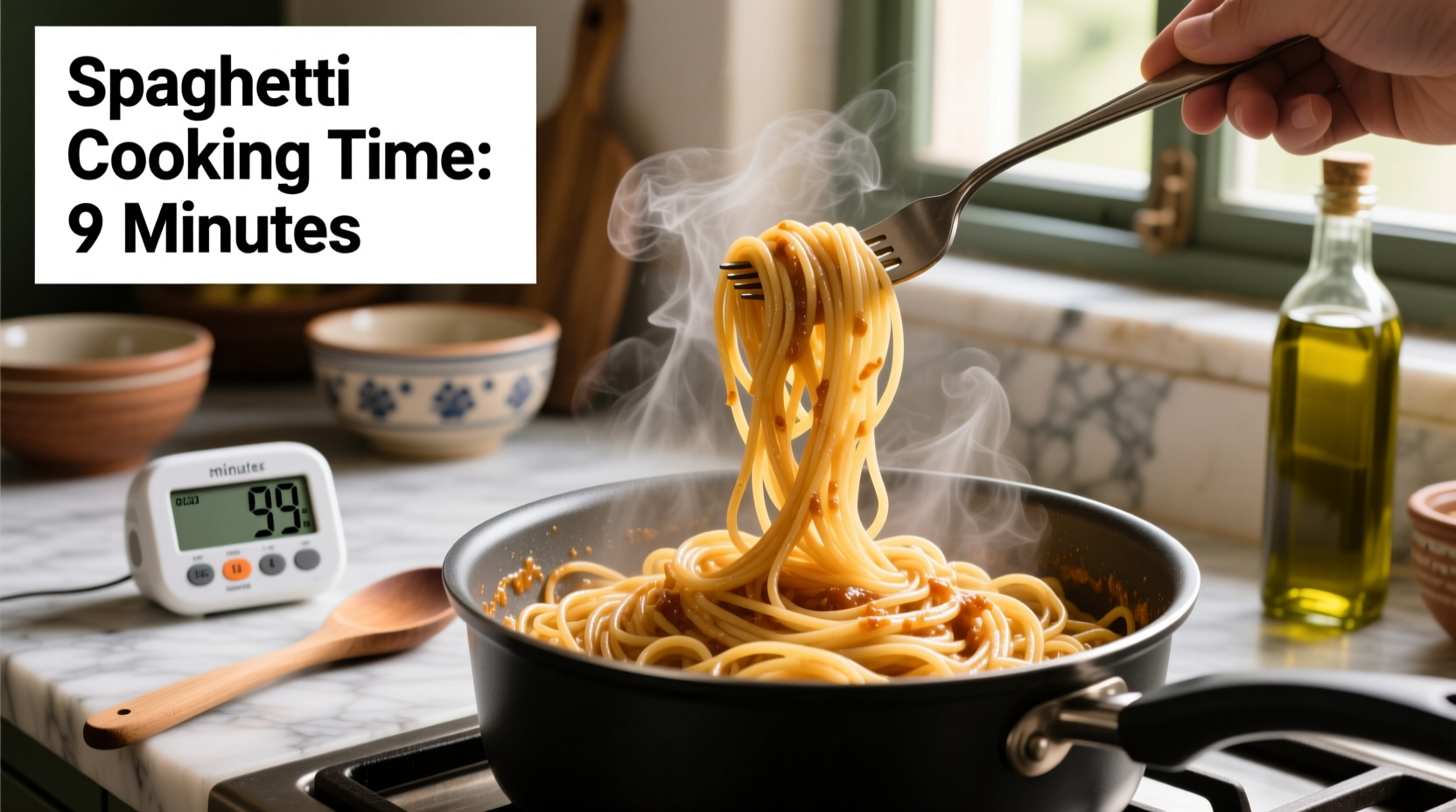Spaghetti typically cooks in 8-12 minutes for perfect al dente texture, but the exact time depends on thickness, brand, altitude, and your preferred doneness. Start testing 2 minutes before the package instructions suggest, as visual cues and taste testing are more reliable than timers alone.
Getting spaghetti perfectly cooked seems simple, yet millions of home cooks struggle with mushy or undercooked pasta daily. As a professional chef who's taught thousands to master basic techniques, I'll show you exactly how to achieve restaurant-quality spaghetti every time - no fancy equipment needed.
The Science Behind Perfectly Cooked Spaghetti
When spaghetti hits boiling water, two critical processes occur: starch gelatinization and protein coagulation. The starch absorbs water and swells, while gluten proteins tighten. Cook too long, and you get mushy strands; undercook, and you'll have that unpleasant chalky center. The sweet spot? When starch has fully hydrated but gluten hasn't over-tightened - typically between 8-12 minutes for standard dried spaghetti.
| Pasta Type | Standard Cooking Time | Al Dente Test Window | Key Visual Cues |
|---|---|---|---|
| Regular dried spaghetti | 8-12 minutes | 6-10 minutes | Slight sheen, flexible but firm |
| Fresh spaghetti | 1-3 minutes | 1-2 minutes | Bright color, plumps immediately |
| Whole wheat spaghetti | 10-14 minutes | 8-12 minutes | Darker appearance, earthy aroma |
| Gluten-free spaghetti | 6-10 minutes | 5-8 minutes | Translucent edges, no white core |
Your Step-by-Step Spaghetti Cooking Process
Preparation Phase: Setting Up for Success
Use a large pot with 4-6 quarts of water per pound of spaghetti - crowded pots create sticky pasta. Add 1-2 tablespoons of coarse salt per gallon after the water reaches a rolling boil (adding salt to cold water can pit your pot). Never add oil to the water - it prevents sauce from clinging later.
Cooking Phase: Timing and Technique
When water boils vigorously, add spaghetti all at once. Stir immediately for 30 seconds to prevent sticking. Set your timer for 2 minutes less than the package suggests. For standard Barilla spaghetti, that means starting your timer at 6 minutes instead of 8.

Testing Phase: Beyond the Clock
At your test time, fish out a strand with tongs. Cool slightly, then bite. Perfect al dente spaghetti offers slight resistance in the center with no hard core. The USDA Food Safety and Inspection Service confirms that visual and texture testing remains the most reliable method for determining pasta doneness, as package times vary significantly between brands and storage conditions (USDA FSIS).
Altitude dramatically affects cooking time - for every 1,000 feet above sea level, add 15-25 seconds to your cooking time. In Denver (5,280 feet), spaghetti that takes 8 minutes at sea level needs nearly 10 minutes.
Finishing Phase: The Restaurant Secret
Reserve 1 cup of starchy pasta water before draining. Drain spaghetti immediately when done - don't let it sit in the colander. Return to the warm pot with your sauce and ¼ cup pasta water. Toss vigorously over low heat for 60-90 seconds. This critical step, called mantecatura, creates emulsified sauce that clings perfectly to each strand.
Avoid These 3 Common Spaghetti Mistakes
Mistake #1: Relying Solely on Package Timing
Package times are estimates based on ideal conditions. Humidity, water mineral content, and even pot material affect cooking speed. Always start testing 2 minutes early. The International Pasta Organization's cooking guidelines emphasize that "the only true test is tasting" due to environmental variables (IPO).
Mistake #2: Overcrowding the Pot
Too much pasta lowers water temperature drastically, extending cooking time unevenly. Cook in batches if needed. Professional kitchens never exceed 1 pound of pasta per 6 quarts of water.
Mistake #3: Rinsing After Cooking
Rinsing removes the starch that helps sauce adhere. The only exception is for cold pasta salads. For hot dishes, that starchy film is your sauce's best friend.
Special Situations and Adjustments
Reheating leftovers: Drop cooked spaghetti into boiling water for 30-60 seconds. Microwaving creates uneven texture. Leftover spaghetti actually cooks 20% faster on second heating due to starch retrogradation.
High-altitude cooking: In mountainous regions, water boils at lower temperatures (203°F at 5,000 feet vs 212°F at sea level), requiring longer cooking. Add 25% more time above 3,000 feet.
Specialty pastas: Whole wheat spaghetti needs 2-3 extra minutes as the bran slows water absorption. Gluten-free varieties often cook faster but require careful monitoring to avoid sudden mushiness.
Why Perfect Timing Matters: The Texture Spectrum
Undercooked spaghetti (6-7 minutes): Hard white core, chalky texture, unpleasant bite Al dente (8-10 minutes): Slight resistance throughout, uniform color, holds shape in sauce Overcooked (12+ minutes): Mushy texture, falls apart when twirled, loses structural integrity
Food scientists at the University of Bologna found that al dente pasta has a glycemic index 25% lower than overcooked pasta, making proper timing not just about texture but also nutritional impact (UNIBO Department of Agricultural and Food Sciences).
Mastering Spaghetti: A Timeline of Technique
The modern approach to spaghetti cooking evolved significantly:
- 1900s: Italians boiled pasta until completely soft (15-20 minutes)
- 1920s: "Al dente" concept emerges in professional kitchens
- 1950s: Package timing instructions become standard
- 1980s: Food science reveals starch gelatinization process
- 2000s: Precision timing apps and thermometers enter home kitchens
- Today: Focus on sensory testing over strict timing
This evolution shows why modern chefs emphasize testing over timers - our understanding of pasta science has matured beyond simple clock-watching.
Pro Tips for Spaghetti Success
- Reserve pasta water: That starchy liquid is liquid gold for sauce consistency
- Finish in the sauce: Never serve pasta swimming in sauce - it should coat each strand
- Season in layers: Salt the water, then adjust seasoning after combining with sauce
- Rest before serving: Let tossed pasta sit 2 minutes to absorb flavors
When Timing Goes Wrong: Quick Fixes
Undercooked? Return to boiling water for 60-90 seconds. Don't try to fix in sauce - it won't absorb properly.
Overcooked? Immediately shock in ice water to stop cooking, then finish in sauce for 30 seconds. Best used in pasta salads where texture matters less.
Sticky strands? You didn't stir enough in the first minute or used too little water. Next time, increase water volume and stir more vigorously initially.











 浙公网安备
33010002000092号
浙公网安备
33010002000092号 浙B2-20120091-4
浙B2-20120091-4